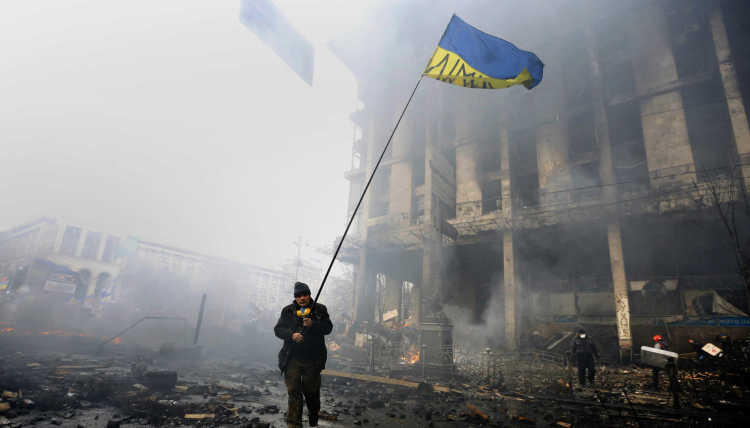In Brief | 18/05/2016
What Comes after War?
Julia Strasheim, peace and security researcher at the GIGA, sheds light on the role of transitional governments in post-war societies.

From Ukraine to Nepal to Liberia – when the fog of war lifts, transitional governments are often established. They play a decisive role in determining whether the region experiences lasting peace. A look around the world shows that they don’t always succeed. Julia Strasheim, peace and security researcher at the GIGA, sheds light on the influencing factors.
You study transitional governments in post-war societies. What distinguishes them from normal governments?
Following civil wars, two things normally need to take place. On the one hand, armed conflicts need to be resolved within the framework of political institutions. Transitional governments are established to carry out elections and to promote democracy. However, in and of themselves, they are completely undemocratic. They are appointed, not elected. For this reason, we call them “benevolent autocrats” in the research. On the other hand, security needs to be re-established, and transitional governments need to stabilise societies. But who makes up these transitional governments? Often it is people who were responsible for the war, and who now have the power to make important decisions. Transitional governments are therefore extremely paradoxical constructs.
A recent example of the success – as well as the failure – of a transitional government is Ukraine. Why were there two such different developments there within 10 years?
It really is the case that the situation that dominated during the Orange Revolution in 2005 differed considerably from that in 2014. In 2004 the parties made compromises. The government and the opposition negotiated constitutional reforms that were to the advantage of each side, and they reached a power-sharing agreement. All the parties got a so-called “piece of the pie” with respect to power, which resulted in a peaceful process. After the protests of 2014 the basic situation looked the same: on one side there was the opposition from western Ukraine and on the other Yanukovych and his supporters from eastern Ukraine. But this time no power-sharing agreement was implemented.
Why not?
There are a number of reasons. Among other things, Yanukovych’s regime reacted violently to the demonstrators at Maidan Square, compromising its legitimacy in the process. And the Maidan movement included the radical right-wing Svoboda party, but it didn’t integrate voices from eastern Ukraine or from Yanukovych’s party. Many people in eastern Ukraine felt excluded as a result, which contributed to the violence.
Wasn’t it still possible to get all the actors on board at a later point in time?
In its first few weeks, the transitional government didn’t act very cleverly. For example, it initially discussed whether Russian should be removed as an official language. In the end this didn’t get through, because the president refused to sign such a law. But the simple fact that such a suggestion had been made at the beginning of the transitional phase increased the insecurity and fear of the ethnic Russians and the people in eastern Ukraine. They must have thought, “This transitional government is threatening our existence."
What does the ideal formula for a transitional government look like?
It is important to give all actors the opportunity – for example, through power-sharing – to participate in developing laws, so that everyone feels secure in the post-war state. A second point is the involvement of international actors, such as the UN, as a security guarantee for the parties. Even more important than the composition of this government, though, is paying attention to what it does and how it does it. Transitional governments should demobilise and disarm actors before the first election. Civil society actors and unarmed political parties also need to be included.
Which transitional governments have been successful?
In Nepal in 2006, the transitional government negotiated a strong power-sharing agreement for the Maoist rebels, with civil society participation. And in Liberia in 2003, the transitional government managed to end the civil war. Of course, there are still many conflicts in each of these countries and the democratic structures are still unstable, but in contrast, the transitional governments in Burundi, the Democratic Republic of Congo, and Cambodia haven’t even managed to contain the violence there. The empirical analysis also shows that for one- to two-year transitional governments, power-sharing is a suitable means for “buying off” rebel groups or armed groups. But power-sharing is often not a cure-all that works forever. We can see this in Bosnia, for example, where power-sharing has been integral to the government system since 1996 and has contributed to a bureaucratic standstill and a high level of corruption.
Thank you very much for the interview.
The article "Power-sharing, commitment problems, and armed conflict in Ukraine" was published in April 2016 in the Civil Wars anthology. It can be ordered here.
